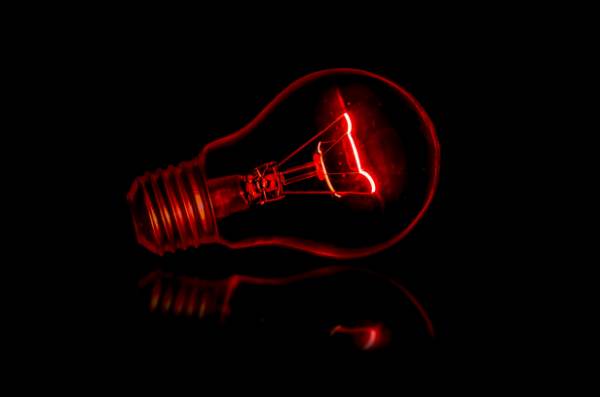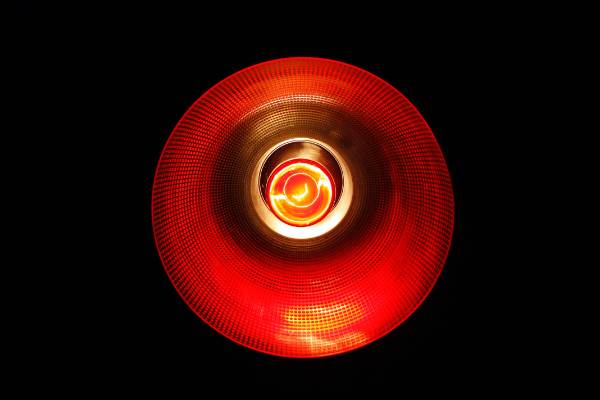Do you realize that some light colors are significantly more conducive to sound sleep than others? It’s true that the wrong lighting in your bedroom can hinder your ability to drift off to sleep and stay asleep all night. But which color of light is the most conducive to sleeping? For sleeping, a red or amber light is ideal.
Light And Our Environmental Cognition
It has been discovered that light has a psychological or biological effect in addition to providing visual effects and allowing us to see, distinguish between contrasts, and perceive different things.
In addition to enhancing cognition, light can also enhance mood, well-being, and sleep. For us to perceive our surroundings and the world around us, light is necessary.
It clarifies what we must understand in order to interpret it and helps us memorize, remember, and understand it. Numerous studies on light and our environmental cognition have demonstrated all of this.
For this reason, light is crucial to the circadian rhythm and sleep-wake cycle in humans.
Our melatonin production and body’s readiness for bedtime are both influenced by light, including its brightness, saturation, and even its absence.
The Quality Of Light In Relation To Color
Understanding the nature of light is crucial before determining which color is best for sleep. Light has three main qualities, as mentioned before;
- Brightness – This is the output of a light source. According to studies, the brightness of the light has a greater impact on our emotions and, consequently, on how sleepy we feel.
- Hue – this is a color or the shade of light. Contrary to artificial light, a natural hue has a different impact on your mood and level of sleepiness. The artificial or blue light’s potential to promote wakefulness before sleep is frequently disputed for this reason.
- Saturation – this is how we refer to the intensity of a light color. The greater the intensity of the color, the greater the impact it has on our emotions. Saturation in the art can range from fully saturated, or 100% pure color, to 0% saturated, or gray. This also applies to light.
Brightness, hue, and saturation all work together to determine whether a color is good for promoting wakefulness or sleep. Therefore, regardless of the actual color of the light, this must be kept in mind when choosing the color of the light.

Lighting Effects And Sleep
In some cases, the lighting effect or the light’s direction, rather than just the light’s color, is what influences our moods and level of drowsiness. Here’s how the lighting effect or direction can affect our mood, sleep, and overall mental state;
- Intense direct light, from above – makes us feel tenser, stressed, anxious, and overall emotionally and physically restless. It might encourage vigilance and reduce sleep anxiety.
- Low overhead lighting with warm color tones – makes us feel relaxed, calm, connected with the people we’re sharing the environment with, and prone to pondering and thinking.
- Bright light, and wall lighting with cooler tones – make us feel more focused on the work, more concentrated, and provide visual clarity.
- Low light level, warm light in the activity center, and dark areas in the perimeter – makes us feel more intimate, cozy, and eventually, more sleepy. Melatonin production and sleepiness are aided by low, warm light.
Best Color Lights For Sleep
Amber Light
For better sleep, this color of light is a suitable calming light. The release of melatonin is encouraged by amber light, which also makes us feel calmer. It might also be connected to an uptick in general disposition.
We may not be aware of the fact that we are surrounded by blue light from contemporary light sources all the time, including laptops, TVs, and smartphone screens.
These gadgets all produce a lot of blue light, which confuses your circadian rhythms and prevents melatonin from being secreted.
By choosing amber lighting for your home, you can protect your eyes from damaging blue light and make it easier for you to get to sleep.
Melatonin secretion is not negatively impacted by the warm amber light.
Amber light mimics the amber-wavelength light of candlelight, which makes it an ideal calming light color for sleep and helps you nod off quickly.
Red Light
Red light is unquestionably the most calming color for bedtime. You can avoid interfering with your circadian rhythm by using a red nightlight.
So switching to a red light a few hours prior to bed will undoubtedly make it easier for you to fall asleep.
Additionally, exposure to red light will help you fall asleep faster than exposure to the blue or green light that white light emits if you awaken at night.
Why then is red the best color of light for sleeping? Our eyes have photosensitive cells that respond to light and regulate our body’s internal biological clock.
Our brain receives signals from these photosensitive cells that are sensitive to various wavelengths.
Our brain receives a signal from the blue light that is absorbed by our eyes telling us it is daytime. Consequently, our internal biological clock becomes disoriented and prevents the release of melatonin.
You get sleepy because your brain releases melatonin, which is a chemical. Red light is the most calming color for sleep because it blocks out green light, which also inhibits the release of melatonin naturally.
The Benefits Of Red Or Amber Light For Sleep
Here are a few of the most obvious advantages of red or amber light for sleeping.
Natural Melatonin Production
Compared to other types of light, such as blue light, red light has been found to help the body produce more melatonin.
The brain is calm and in harmony with the natural sleep-wake cycle when exposed to red or near-red wavelengths rather than sensitive and alert.
Sleep Inertia Prevention
The groggy feeling we experience upon waking up (also known as sleep inertia) can be avoided by being exposed to red lights both before and during sleep.
Red light exposure made study subjects feel more awake and focused when they woke up, according to the research.
Additionally, they slept more soundly and had better quality sleep, which improved their performance on a cognitive test.
Muscle Relaxation
Red light exposure helps to promote body relaxation in addition to making you feel sleepy. Since red light generally calms us down and aids in the release of tension in the body, it is thought to promote muscle relaxation.
Better sleep can also be facilitated by muscle relaxation.
Final Thoughts
If you want to encourage sleep, red and amber light colors are your best bet. In the evening and right before bed, we strongly advise you to stay away from blue, artificial, and bright lights as they encourage alertness and wakefulness and block the release of melatonin.
